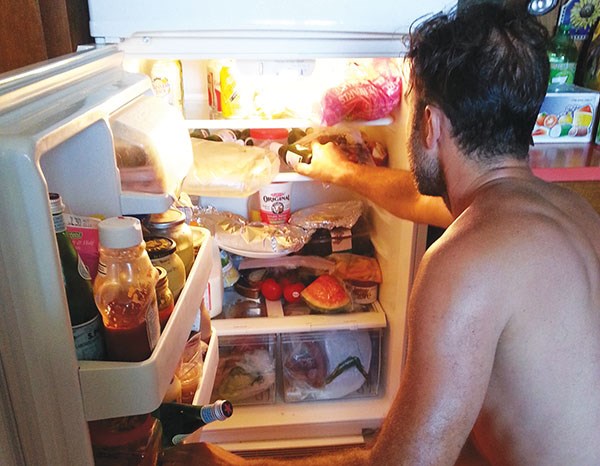Is there anything better than a full fridge? The potential of countless meal options; inspiring colours from crisper to cheese drawer; the knowledge that another grocery shop with demanding kids in tow is at least a week away.
Despite the visual joy, it’s after staring into my newly stocked fridge that I often reach for the mac n’ cheese. Call it a fear of failure, or the inability to function under pressure, but too much food in my face makes me freeze.
Despite the primal satisfaction of a well-stocked kitchen (the hunt was a success, we won’t starve this week!) I find my greatest culinary moments stem from a near-empty barrel. There’s potential in the barely-there groceries that jump out at you only because, like the awkward kid on the playing field, they were left out of the group play and are still waiting for a turn. Uncluttered by rivals, leftovers like slightly shriveled mushrooms, an over-ripe tomato, a few shreds of ham and a knob of ginger that looks like it escaped from Pan’s Labyrinth, can be turned into an epic success come dinnertime.
This, and a deeply engrained frugality that despises waste (it was common for my dad to serve us our dinner leftovers for breakfast the next day, even if it was four peas and a spoonful of mashed potatoes), has led to a shift in my shopping habits – a cutting back on produce and perishables to amounts that I can actually use in a week. Where I used to buy one of everything that I like to cook with, now I pick up a few showpiece items (broccolini, red cabbage, shitake) and make sure my staples, like onion, ginger and garlic, are well stocked.
Data collected by the David Suzuki Foundation shows that around 30 per cent of food, worth about $48 billion, is tossed in the trash each year in the U.S., with the average household in Toronto throwing out 275 kilograms. The average Canadian family throws out one in four produce items, the equivalent of $600 per year.
Over 30 per cent of fruits and veggies in North America don’t even make it into stores because they’re not considered perfect enough for consumers – that waste includes all the water required to grow them, transportation emissions needed to move them, and the sweat equity that went into growing them.
To shop more effectively, here are some tips from the Suzuki Foundation’s tip sheet, Five Ways to End Food Waste (available at www.davidsuzuki.org).
•Take produce out of plastic bags (and try to bring your own to reduce the number of plastics in landfills while you’re at it).
•Wash produce only when you’re ready to eat it, as moisture encourages decomposition and mould.
•Keep fruit stems attached, which reduces the growth of micro-organisms.
•Eat the most delicate items first – raspberries first, potatoes last.
•Ripen unripe fruits in a paper bag with a banana.



